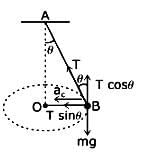KEAM Paper 1 Mock Test - 2 - JEE MCQ
30 Questions MCQ Test - KEAM Paper 1 Mock Test - 2
Two radioactive substances A and B have decay constants 5λ and λ, respectively. At t = 0, a sample has the same number of the two nuclei. The time taken for the ratio of the number of nuclei to become (1/e)2 will be:
The magnetic field and number of turns of the coil of an electric generator is doubled then the magnetic flux of the coil will:
If λ1 and λ2 are the wavelengths of the first members of Lyman and Paschen series, respectively, then λ1 : λ2 is:
Three rods of Copper, Brass and Steel are welded together to from a Y –shaped structure. Area of cross – section of each rod = 4 cm2. End of copper rod is maintained at 100°C where as ends of brass and steel are kept at 0°C. Lengths of the copper, brass and steel rods are 46, 13 and 12 cms respectively. The rods are thermally insulated from surroundings except at ends. Thermal conductivities of copper, brass and steel are 0.92, 0.26 and 0.12 CGS units respectively. Rate of heat flow through copper rod is
In an experiment for determination of refractive index of glass of a prism by i – δ plot, it was found that a ray incident at an angle of 35° suffers a deviation of 40° and that it emerges at an angle of 79°. In that case, which of the following is closest to the maximum possible value of the refractive index?
In an electron microscope, the resolution that can be achieved is of the order of the wavelength of electrons used. To resolve a width of 7.5 × 10-12 m, the minimum electron energy required is close to:
Unpolarized light of intensity I is incident on a system of two polarizers, A followed by B. The intensity of emergent light is I/2. If a third polarizer C is placed between A and B, the intensity of emergent light is reduced to I/3. The angle between polarizers A and C is θ. Then,
Assume that an electric field  exists in space. Then the potential difference VA – VO, where VO is the potential at the origin and VA the potential at x = 2 m is:
exists in space. Then the potential difference VA – VO, where VO is the potential at the origin and VA the potential at x = 2 m is:
In a circuit for finding the resistance of a galvanometer by half deflection method, a 6 V battery and a high resistance of 11 kΩ are used. The figure of merit of the galvanometer is 60 μA/division. In the absence of shunt resistance, the galvanometer produces a deflection of θ = 9 divisions, when current flows in the circuit. The value of the shunt resistance that can cause the deflection of θ/2 is closest to:
A current of 1 A is flowing on the sides of an equilateral triangle of side 4.5 × 10-2 m. The magnetic field at the centroid of the triangle will be:
A rocket is fired from the earth towards the sun. At what distance from the earth's centre is the gravitational force on the rocket zero ? Mass of the sun = 2 × 1030 kg, mass of the earth 6 × 1024 kg. Neglect the effect of other planets etc. (orbital radius = 1.5 × 1011 m).
A cylinder with a movable piston contains 3 moles of hydrogen at standard temperature and pressure. The walls of the cylinder are made of a heat insulator, and the piston is insulated by having a pile of sand on it. By what factor does the pressure of the gas increase if the gas is compressed to half its original volume?
The figure shows a 2.0 V potentiometer used for the determination of the internal resistance of a 1.5 V cell. The balance point of the cell in the open circuit is 76.3 cm. When a resistor of 9.5 Ω is used in the external circuit of the cell, the balance point shifts to 64.8 cm of the potentiometer wire. Determine the internal resistance of the cell.
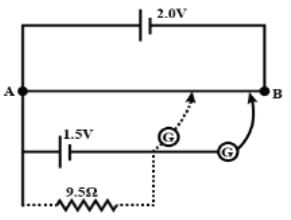
What speed should a galaxy move with respect to us so that the sodium line at 589.0 nm is observed at 589.6 nm?
Light from a point source in the air falls on a spherical glass surface (μ=1.5 and radius of curvature 20cm). The distance of the light source from the glass surface is 100cm. The position where the image is formed is:
One end of a string of length l is connected to a particle of mass m and the other to a small peg on a smooth horizontal table. If the particle moves in a circle with speed v the net force on the particle ( directed towards the centre ) is:
A metal block of area 0.10 m2 is connected to a 0.01 kg mass via a string that passes over a massless and frictionless 0.01 kg pulley as shown in the figure. A liquid with a film thickness of 0.3 mm is placed between the block and the table. When released the block moves to the right with a constant speed of 0.085 ms-1. The coefficient of viscosity of the liquid is: (Take g = 10 ms-2)

Assume that the light of wavelength is 6000Å coming from a star. What is the time resolution of a telescope whose objective has a diameter of 100 inch?
The magnetic field in a plane electromagnetic wave is given by By = (2 x 10-7) T Sin (0.5 x 103x + 1.5 x 1011t). This electromagnetic wave is:
A pure inductor of 25.0 mH is connected to a source of 220 V. Find the inductive reactance and rms current in the circuit if the frequency of the source is 50 Hz.
A long infinite current-carrying wire is bent in the shape as shown in the figure. The magnetic induction at point O is:
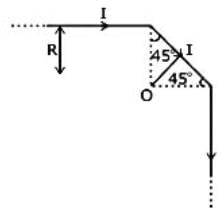
Two gases A and B have equal pressure P, temperature T, and volume V. The two gases are mixed together and the resulting mixture has the same temperature T and volume V as before. The ratio of pressure exerted by the mixture to either of the two gases is:
A current of 1.6 A is passed through CuSO4 solution. The number of Cu++ ions liberated per minute are:
A book with many printing errors contains four different formulae for the displacement of a particle undergoing a certain periodic motion x. Which one is the wrong formula on dimensional grounds (A = amplitude, ω = angular velocity, T = time period of motion)?
The figure below shows four plates each of area A and separated from one another by a distance d.

What is the capacitance between P and Q?
A spring of spring constant 5 × 103 is stretched initially by 5 cm from the unstretched position. The work required to stretch it further by another 5 cm is
Two sources of sound A and B produce progressive waves given by y1 = 6 cos(100πt) and y2 = 4 cos(102πt) ear the ears of an observer. It will hear
Two beams of red and violet colors are made to pass separately through a prism (angle of the prism is 60°). In the position of minimum deviation, the angle of refraction will be:
A planet of radius R = 1/10 × ( radius of Earth) has the same mass density as Earth. Scientists dig a well of depth R/5 on it and lower a wire of the same length and of linear mass density 10-3 kg m-1 into it. If the wire is not touching anywhere, the force applied at the top of the wire by a person holding it in place is: (take the radius of Earth = 6 × 106 m and the acceleration due to gravity on Earth is 10 ms-2)
A stone of mass m is attached to one end of a wire of cross-sectional area A and Young's Modulus Y. The stone is revolved in a horizontal circle at speed so that the wire makes an angle θ with the vertical, the strain produced in the wire is


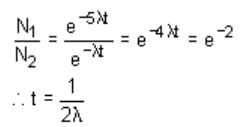


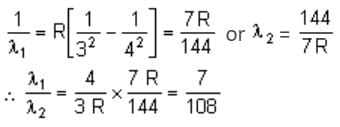
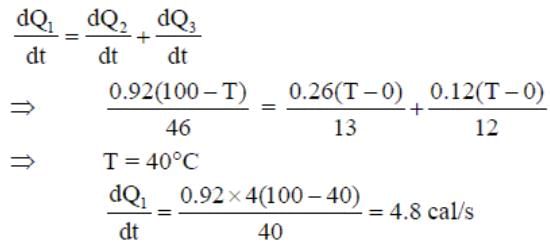
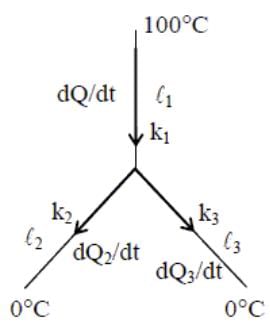


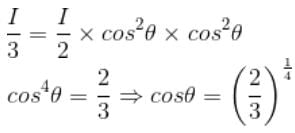
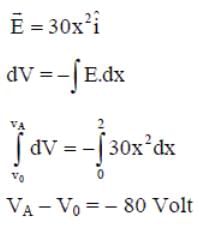
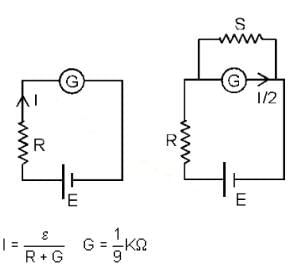

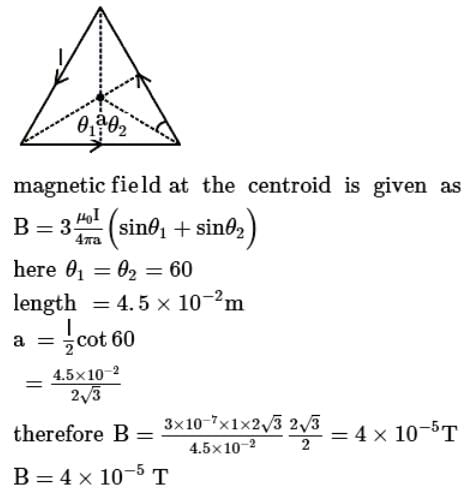







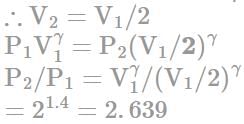





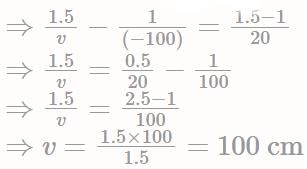






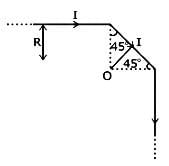










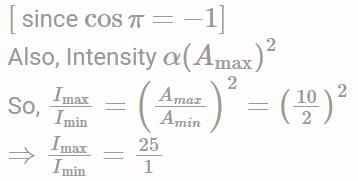
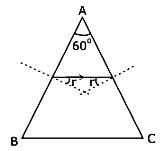
 for both the colour.
for both the colour.





